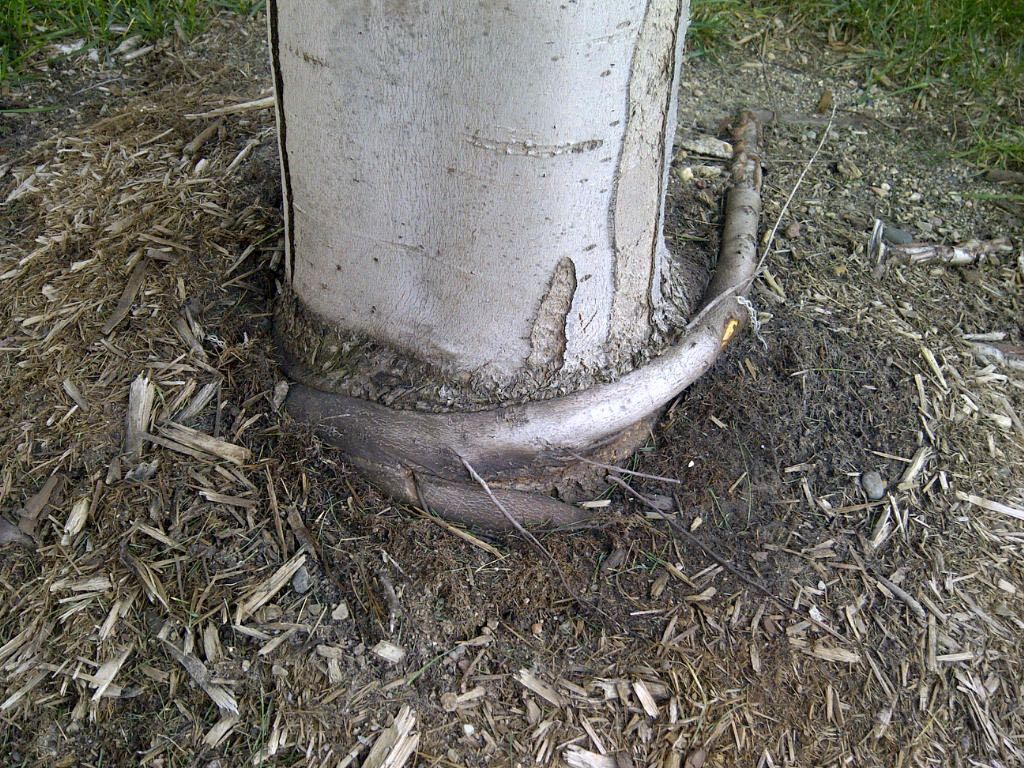Most people don’t realize there is a correct way to plant trees and the importance of using those proper procedures. When a tree is planted improperly, it can stress the tree leaving it more prone to pests and diseases. Improper planting can even lead to slow decline and death from several factors.
The first step in planting a tree is selecting the right tree for your landscape. Every tree has unique requirements and we can help you determine which tree is best suited for the conditions in your yard.  Light requirements, soil preferences, pest susceptibility, hardiness, and branching structure are just a few of the many factors to consider when selecting a tree. We will select a tree without pests, diseases, or structural faults from the nursery stock specifically for your space. Trees that are smaller in trunk diameter will establish faster than a larger tree and won’t be as affected by the stress of transplant. We also want to be aware of any overhead and underground utilities that should be avoided. A common planting mistake is planting a young tree beneath overhead utilities without realizing that over the course of a few years, the tree will eventually be intertwined with the power lines and require heavy pruning or removal.
Light requirements, soil preferences, pest susceptibility, hardiness, and branching structure are just a few of the many factors to consider when selecting a tree. We will select a tree without pests, diseases, or structural faults from the nursery stock specifically for your space. Trees that are smaller in trunk diameter will establish faster than a larger tree and won’t be as affected by the stress of transplant. We also want to be aware of any overhead and underground utilities that should be avoided. A common planting mistake is planting a young tree beneath overhead utilities without realizing that over the course of a few years, the tree will eventually be intertwined with the power lines and require heavy pruning or removal.

The most common mistake when planting a tree is planting it too deeply. The trunk flare is the portion of the trunk that attaches to the upper roots. The trunk flare should never be planted below the soil. If planted too deep, adventitious roots can emerge and become girdled. Girdled roots can eventually strangle a tree by cutting off inner vascular tissues that transport water and nutrients throughout the tree.
Once we identify the trunk flare, we can start digging our planting hole. For ball and burlap trees, burlap needs to be removed and wire baskets need to be taken off. The twine that comes on nursery trees needs to be removed from around the trunk of the tree so it does not become embedded in the trunk as the tree grows. This can have the same consequences as girdled roots. By cutting off the xylem and phloem tissues in the trunk, there is a possibility of slowly killing the tree.
The tree should then be placed carefully into the hole by the root ball. Ensuring the root flare is not too deep, and the tree is standing straight, the soil can be firmly placed back in the hole while adding water. Lack of water is the number one cause of death in a newly planted tree. All trees will experience stress after planting, and the best way to ensure a tree’s survival post-planting is to have an adequate watering plan.
A 2-4-inch-thick layer of mulch should be added around newly planted trees. Mulch conserves moisture for the tree’s roots, discourages the growth of weeds, regulates soil temperatures, and is aesthetically pleasing. Mulch should never be mounded excessively thick or touch the trunk of the tree; this can cause adventitious root development and trunk rot from the retained moisture.
Staking a tree after planting is not always recommended. A tree might be staked if it is exposed to heavy wind or other conditions and needs the added support, but stakes should never be left on for prolonged periods of time.
If you are considering adding a tree to your landscape, we will ensure the proper tree is selected for your landscape and planted correctly. Because we want to guarantee your trees will have a long, healthy life, our trees have a two-year warranty. Give us a call to add a new tree to your property!

